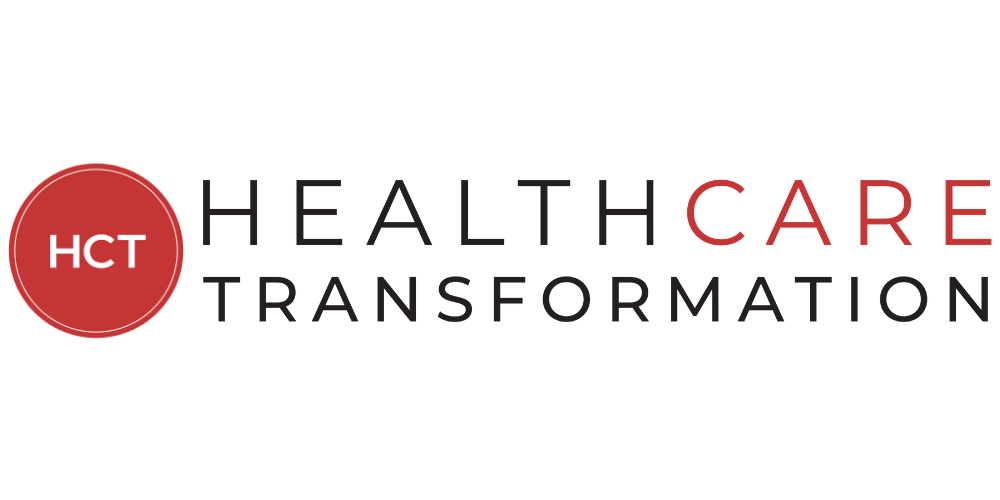A Guide to DEI: How to Achieve DEI Objectives in Healthcare
In today's healthcare environment, diversity in the workplace isn't just a trend, it's something employees have come to expect.
Healthcare organizations that embrace DEI initiatives foster environments where every team member feels respected and valued. This doesn’t just boost morale — it directly impacts patient outcomes, employee engagement and organizational resilience.
But what is workplace DEI, really? And how is DEI implemented in the workplace in a way that goes beyond checklists and surface-level gestures?
This guide takes a deeper look at DEI meaning and step-by-step strategies to build inclusive systems that work — both for your team and the patients you serve.
What is DEI? Understanding DEI and its Role in Healthcare
DEI stands for Diversity, Equity, and Inclusion. In a healthcare context, these aren’t abstract values — they’re operational principles that shape how patients are treated, how teams collaborate and how outcomes are achieved.
Diversity means the presence of differences — including race, ethnicity, gender, sexual orientation, age, disability and socioeconomic background.
Equity is the commitment to fair access, opportunity and advancement for all — recognizing that some individuals or groups may need different support to achieve equal outcomes.
Inclusion means creating a culture where every individual feels welcomed, respected and empowered to contribute.
Understanding DEI in healthcare means acknowledging that patient populations are diverse — and so should the care teams that serve them.
Why is DEI Important in the Workplace?
Healthcare doesn’t serve a single demographic. From pediatric patients to aging adults, from chronic illness to acute injury, from urban centers to rural clinics, the healthcare ecosystem is one of the most diverse. Every day, care teams interact with individuals of different backgrounds, beliefs, abilities, identities and life experiences.
So, why is DEI important in the workplace?
It improves employee engagement. Inclusive environments reduce burnout, increase retention, and help healthcare professionals feel a sense of purpose and belonging.
It enhances patient care. Diverse teams are better equipped to understand and respond to a wide range of patient needs — particularly in underserved or marginalized communities.
It fosters trust. Patients are more likely to trust and follow treatment plans when they feel understood and represented.
It strengthens organizational reputation. Today’s workforce, especially younger generations, seeks employers who actively uphold inclusive values.
Investing in diversity at work isn’t just about fairness. It’s about operational excellence, health equity and future-readiness.
What DEI Isn’t
While DEI initiatives are rooted in equity and inclusion, misunderstandings can hinder their effectiveness. It’s important to clarify what DEI is not:
DEI is not about hiring unqualified candidates. The goal is to ensure that all qualified individuals, regardless of background, have equal access to opportunities. Merit, qualifications and team cohesion still matter.
It’s not about meeting quotas. While tracking representation helps measure progress, DEI is not about fulfilling arbitrary numbers. It's about creating an environment where diverse perspectives are valued and included.
DEI does not exclude any group. Inclusion means everyone should feel valued and respected. DEI efforts aim to broaden participation, not to marginalize any one group.
It’s not a one-time initiative. Successful DEI initiatives are long-term, organization-wide commitments.
What Are the 4 P's of DEI? A Practical Way to Organize DEI Efforts
While there’s no one-size-fits-all approach to DEI, some organizations use a model known as the 4 P’s of DEI — People, Policy, Programs and Practice — to guide implementation. This structure offers a simple, actionable way to ensure DEI principles are integrated into both organizational systems and daily behaviors.
People:
Recruit, support and retain a diverse workforce that reflects the communities you serve. Representation matters — especially in clinical, leadership and decision-making roles.
Policy:
Establish clear, equitable policies that support DEI initiatives — including anti-discrimination, fair pay, accessibility and inclusive benefits. These should be woven into HR guidelines, recruitment efforts, onboarding protocols and disciplinary structures.
Programs:
Create structured DEI programs like unconscious bias training, cultural competency workshops, mentorship initiatives and employee resource groups.
Practice:
Operationalize DEI values into day-to-day practices. This means equitable access to development opportunities, inclusive communication and continuous feedback mechanisms.
11 Steps for Creating and Implementing a DEI Framework in Healthcare
How is DEI implemented in the workplace — especially in complex healthcare systems? These steps can help leaders move from vision to action:
1. Assess Your Current State
Start with an honest audit. Use employee surveys, HR data and patient outcomes to identify gaps in representation, satisfaction and access.
Implementation Tips:
Distribute anonymous DEI perception surveys.
Review demographic data by department and role.
Analyze patient satisfaction by demographic group.
2. Define What DEI Means to Your Organization
Customize your DEI definition to reflect your mission, patient demographics and workforce. This shared understanding will guide your policies and communications.
Implementation Tips:
Collaborate with frontline staff and leaders to co-create a DEI statement.
Include the definition in onboarding and training materials.
Publish your DEI philosophy on your website and in internal resources.
3. Align Leadership Around a Shared Vision
Without executive buy-in, DEI efforts stall. Build a leadership coalition or DEI council to champion the work and model inclusive leadership.
Implementation Tips:
Host leadership retreats focused on inclusive leadership.
Set DEI expectations in annual leadership evaluations.
Emphasize metrics that demonstrate how DEI betters the workplace and performance.
4. Set Specific, Measurable Goals
Don’t just aim to “improve diversity.” Define targets — like increasing leadership representation or closing patient outcome gaps — and track your progress.
Implementation Tips:
Align DEI goals with organizational KPIs.
Create dashboards or dedicated metric trackers to visualize progress.
Break down goals by department or team to localize progress tracking and ensure accountability.
5. Integrate DEI Into Policies and Processes
Embed DEI into hiring, promotion, vendor selection, patient care protocols and internal communication strategies.
Implementation Tips:
Audit internal policies through a DEI lens.
Update recruitment language for inclusivity.
Include DEI considerations in RFP/vendor reviews.
6. Prioritize Inclusive Hiring and Advancement
Inclusive job descriptions, diverse interview panels and mentorship programs help ensure your DEI hires are supported and able to grow.
Implementation Tips:
Use structured interviews and diverse panels.
Offer mentorship and sponsorship programs.
Build succession plans that reflect workforce diversity.
7. Implement Programs That Foster Belonging
Create spaces for connection through employee engagement groups, DEI training and recognition programs that elevate voices across the organization.
Implementation Tips:
Launch employee groups or affinity networks.
Celebrate cultural holidays and awareness months.
Recognize employees who model inclusive behaviors.
8. Provide Ongoing Education and Training
Offer continued learning on unconscious bias, cultural humility, trauma-informed care and inclusive leadership.
Implementation Tips:
Partner with external experts for in-depth workshops.
Develop e-learning modules for regular refresher training.
Tie DEI to continuing education requirements.
9. Create Feedback Loops
Allow employees to voice concerns, ideas and experiences anonymously or through structured channels. Use the insights to improve continuously.
Implementation Tips:
Use anonymous suggestion boxes.
Schedule regular listening sessions or focus groups.
Communicate how feedback is being used.
10. Measure Progress and Report Results
Progress doesn’t happen when it isn’t tracked. Transparency builds trust and drives accountability.
Implementation Tips:
Publish DEI impact reports.
Review data by race, gender, role and location.
Highlight wins and areas for growth.
11. Evolve as You Learn
DEI is an ongoing process. Stay flexible, listen to feedback and adapt your approach as your team — and the world — evolves.
Implementation Tips:
Host annual strategy reviews to assess what's working.
Adjust DEI goals based on internal and external changes.
Encourage a “progress over perfection” mindset.
Measuring DEI Success: Tracking Progress and Celebrating Wins
To make real change, you have to measure it. Track DEI metrics such as:
Workforce demographics by department and level
Promotion and pay equity
Patient satisfaction across demographics
Participation in DEI programs
Feedback from inclusion surveys
Celebrate both big and small wins. Highlight milestones in internal communications, newsletters and leadership meetings. Visibility fuels momentum.
Common Challenges When Implementing DEI in Healthcare
Despite good intentions, DEI efforts can encounter friction. Common hurdles include:
Lack of buy-in or perceived urgency
Fear of saying the wrong thing
Inconsistent application across departments
Misunderstanding the legal boundaries around DEI hires
Overcoming these challenges requires education, ongoing support and consistently evaluating your DEI policies. Empower your teams to approach DEI efforts with curiosity and openness.
DEI in Action: Real Examples from Healthcare Organizations
Real-world DEI efforts in healthcare can be inspiring and instructive. Consider these examples:
A hospital that reduced language barriers by hiring multilingual staff and implementing real-time translation in patient portals.
A regional health system that launched an employee resource group for LGBTQ+ employees and saw higher retention among queer staff.
A clinic that revamped its maternity care program to reduce racial disparities in maternal outcomes.
Final Thoughts: DEI as a Driver of Health Equity and Organizational Excellence
For healthcare leaders, building a DEI framework isn’t just a box to check. Rather, it should be viewed as an exercise in creating a system where all voices are heard, all patients are valued and all employees have the opportunity to thrive.


